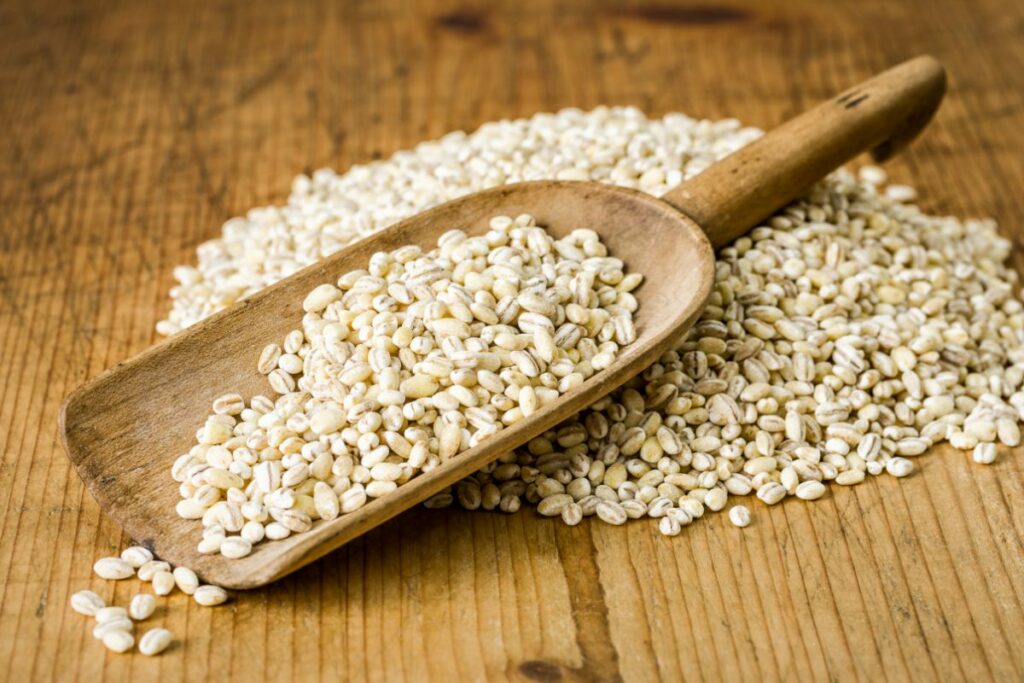You will find that there are many grains that can be harvested in and around the Mediterranean, and consequently, the Mediterranean diet offers a lot of grain products.
The purpose of this article is to tell you all about the most common whole grains you’ll find in the Mediterranean.
Mediterranean whole grains include (in alphabetical order): barley, buckwheat, bulgur, farro, freekeh, millet, oats, brown rice, rye, and spelt.
These grains are frequently used in the Mediterranean in the making of grain products such as bread, pasta, polenta, and oatmeal.
It’s worth noting at this point that the Mediterranean classic food couscous is actually neither a seed nor a whole grain.
In fact, it’s actually a type of pasta that’s made from semolina (see also ‘Is Semolina A Whole Grain?‘).
Here follows some brief descriptions of the most common Mediterranean grains.
(Please feel free to scroll ahead if you wish.)
1. Barley
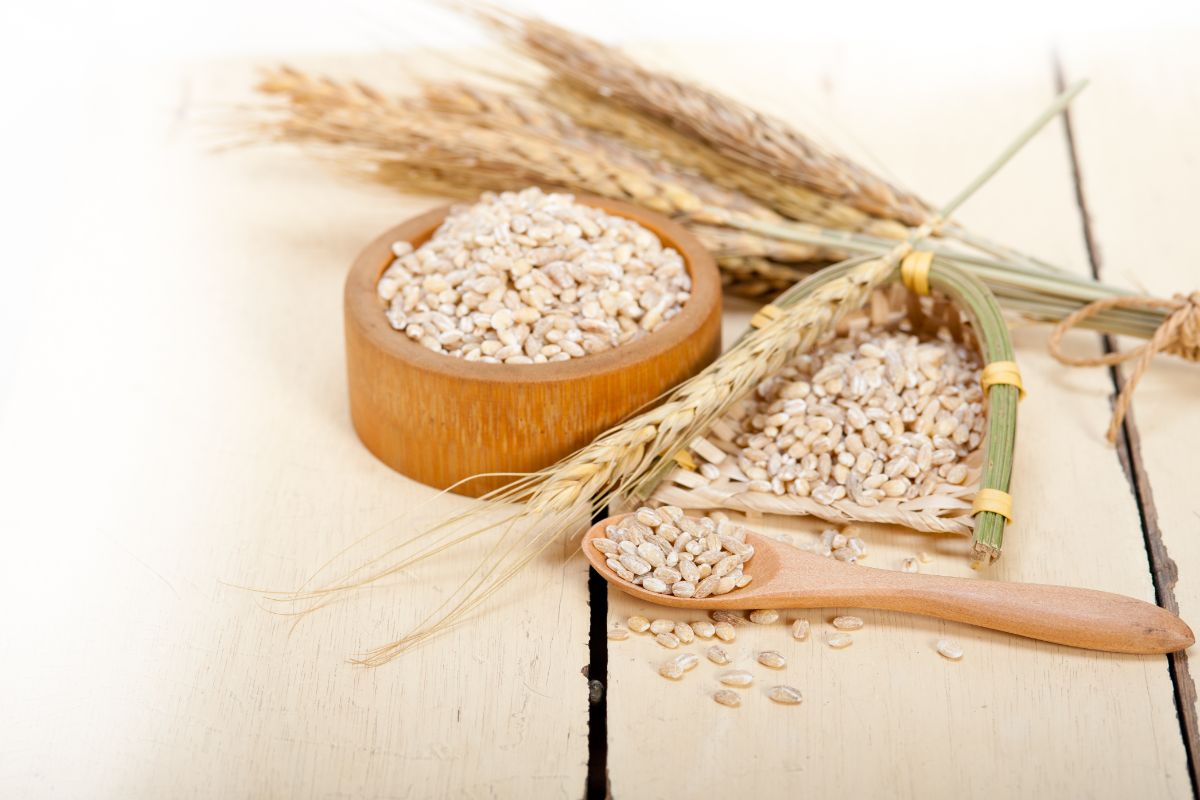
Top Facts About Barley: Believe it or not, barley is actually a type of grass. It was one of the first grains ever to be cultivated and dates back over 10,000 years.
Calories In Barley: 651 calories per cup.
Nutrients Present: 135 grams of carbohydrates and 23 grams of protein per cup, several B vitamins, specifically niacin, thiamin, and pyridoxine, and a type of fiber known as beta-glucans.
Benefits: The beta-glucan fiber in barley is believed to reduce cholesterol and blood glucose levels.
Gluten Content: Between 5 and 8 percent gluten
How To Eat Barley:
- Use barley flakes to make oatmeal
- Add it to soups and stews
- Use it as a side dish in place of rice
- Use cooked barley in a salad with healthy vegetables
Potential Substitutes:
- Brown rice
- Quinoa
- Buckwheat
- Farro
2. Buckwheat
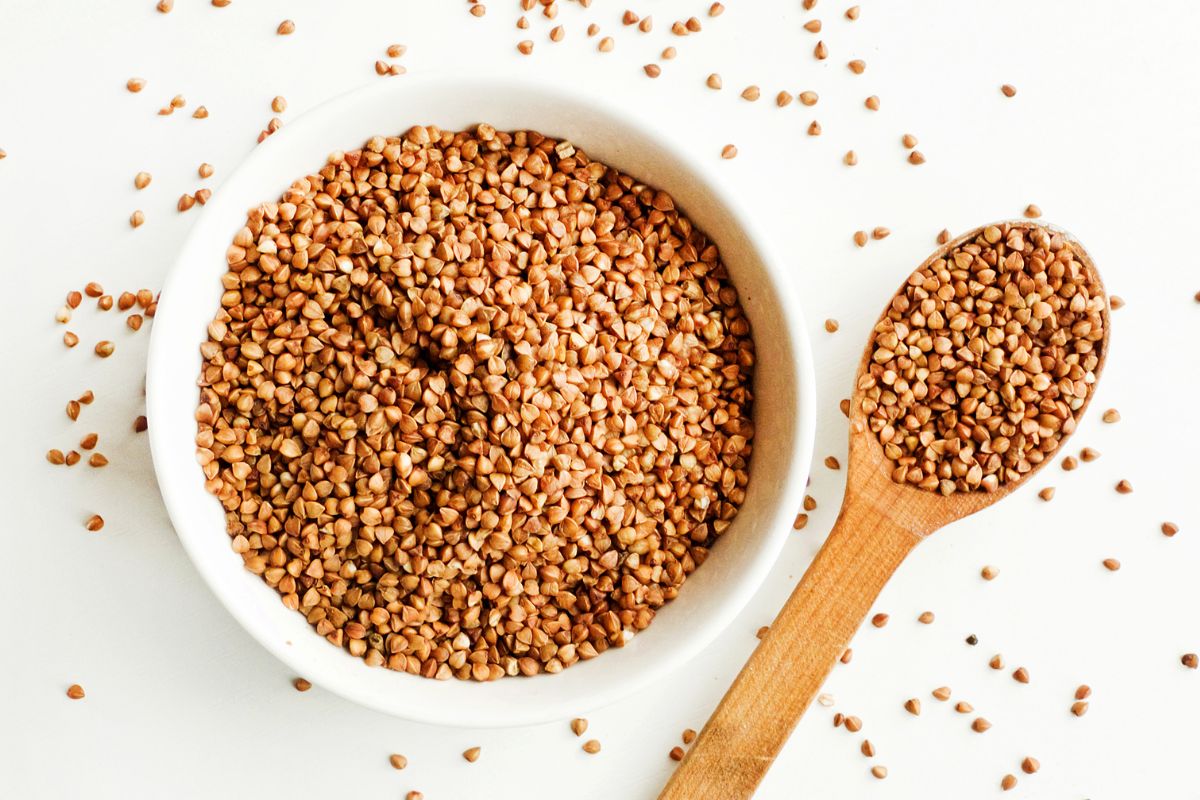
Top Facts About Buckwheat: Buckwheat is considered to be a pseudo-cereal. This grain doesn’t grow on grasses, yet it is used similarly to other cereals.
Calories In Buckwheat: 77 calories per cup.
Nutrients Present: 20 grams of carbohydrates, 3 grams of protein, and 2.7 grams of fiber per cup, iron, flavinoids, and minerals copper, manganese, magnesium, and phosphorus.
Benefits: Non-allergenic buckwheat is believed to reduce blood glucose levels and improve heart health. Some believe it can also help protect against cancer.
Gluten Content: Classed as gluten-free.
How To Eat Buckwheat:
- Stir your buckwheat groats into your salads
- Add to soups for a boost of fiber
- Mix with milk or water to make a sweet or savory oatmeal
Potential Substitutes:
- Oats
- Quinoa
- Gluten-free flour
- Chickpeas
- Brown rice
- sorghum
3. Bulgur
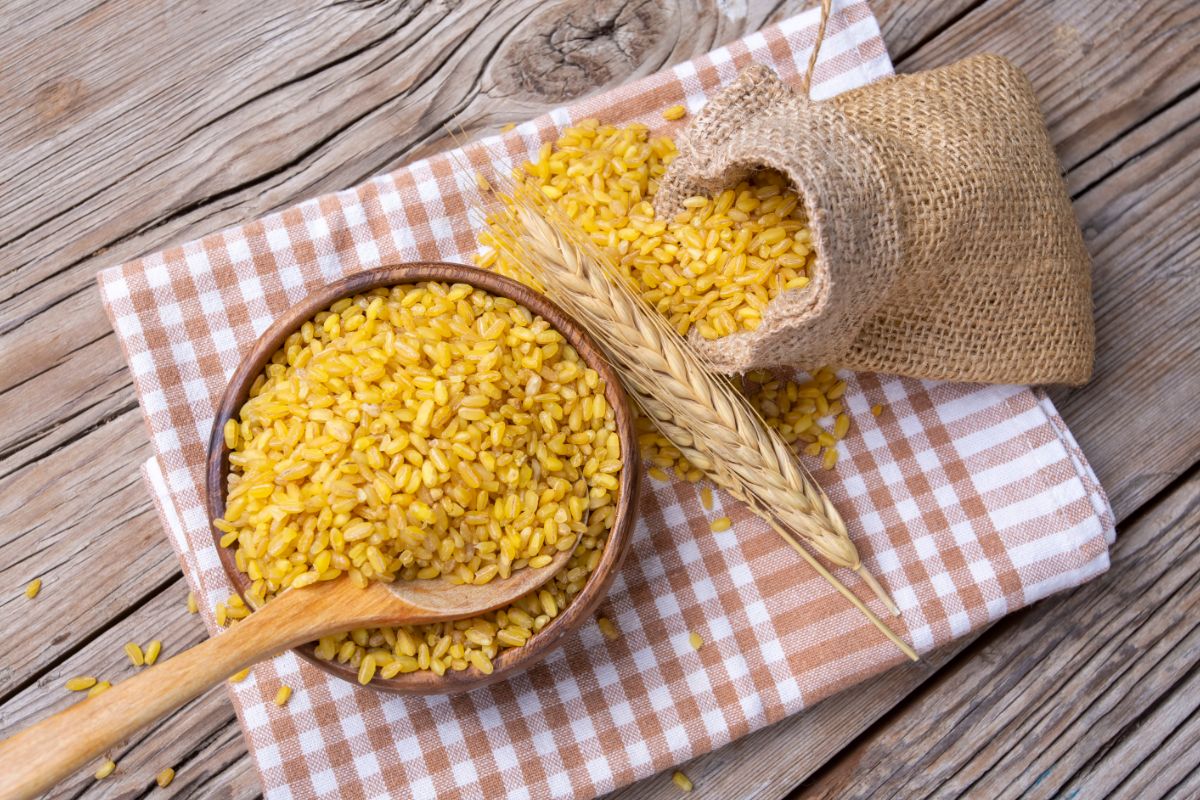
Top Facts About Bulgur: Bulgar is sometimes confused with cracked wheat, and is also known as riffoth and burghul.
Calories In Bulgur: 479 calories per cup.
Nutrients Present: 106 grams of carbohydrates, 17 grams of protein, 26 grams of fiber per cup, vitamins B6, C, and D, and minerals magnesium and calcium.
Benefits: Bulgur is thought to reduce your risk of chronic disease, improve digestion and gut health, and promote weight loss.
Gluten Content: Bulgur does contain gluten, but contains less than other grains.
How To Eat Bulgur:
- Use bulgur in stews
- Use bulgur in salads
- Simmer bulgur in milk as a pudding or oatmeal
- Add it to bread or mince to make kibbeh balls
Potential Substitutes:
- Cracked wheat
- Quinoa
- Rice
4. Farro
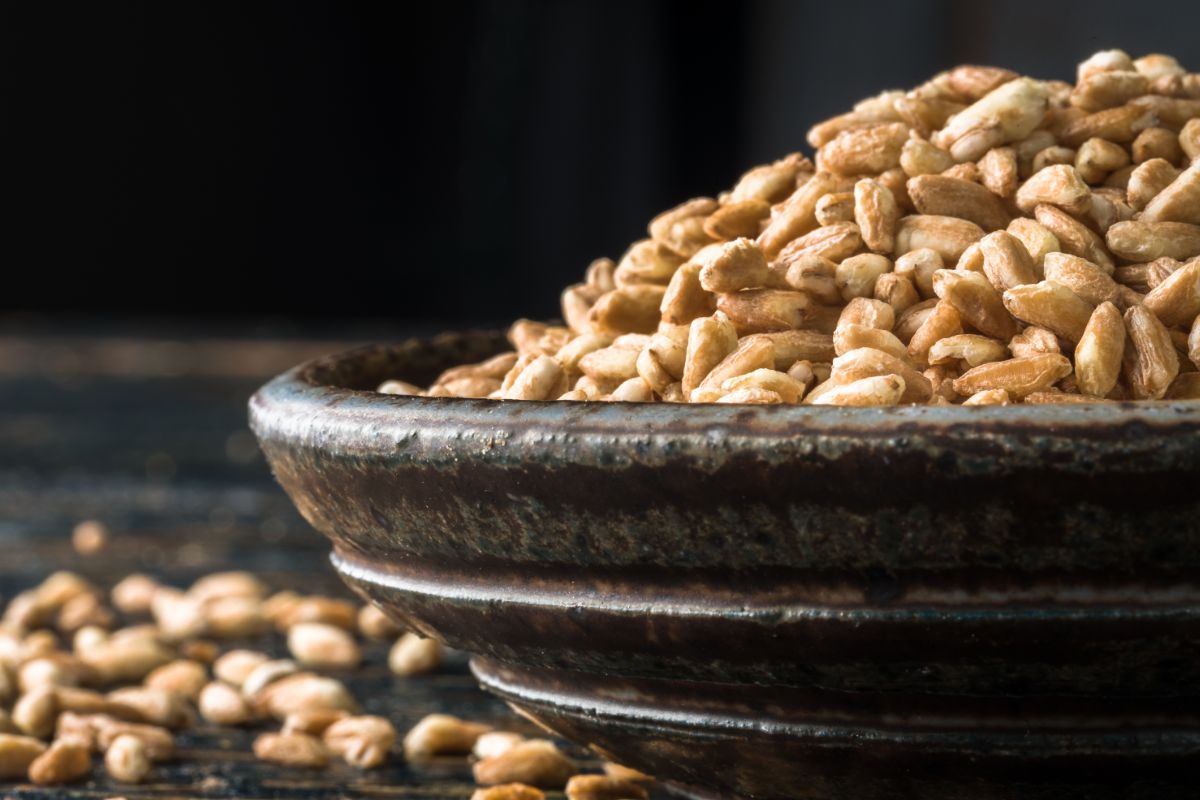
Top Facts About Farro: Farro actually refers to the grains of three different wheat species, specifically einkorn, emmer, and spelt.
Calories In Farro: 560 calories per cup.
Nutrients Present: 120 grams of carbohydrates, 18 grams of protein, and 12 grams of fiber per cup, minerals iron and magnesium, and vitamin B3, also known as niacin.
Benefits: Farro provides benefits for heart health, blood glucose levels, and brain health.
Gluten Content: Although farro is considered to be healthier than many other grains, it is NOT considered safe for anyone who needs to avoid gluten. All 3 of the species of wheat that make up farro contain gluten.
How To Eat Farro:
- Use farro in soups
- Use farro in salads
Potential Substitutes:
- Spelt berries
- Wheat berries
5. Freekeh
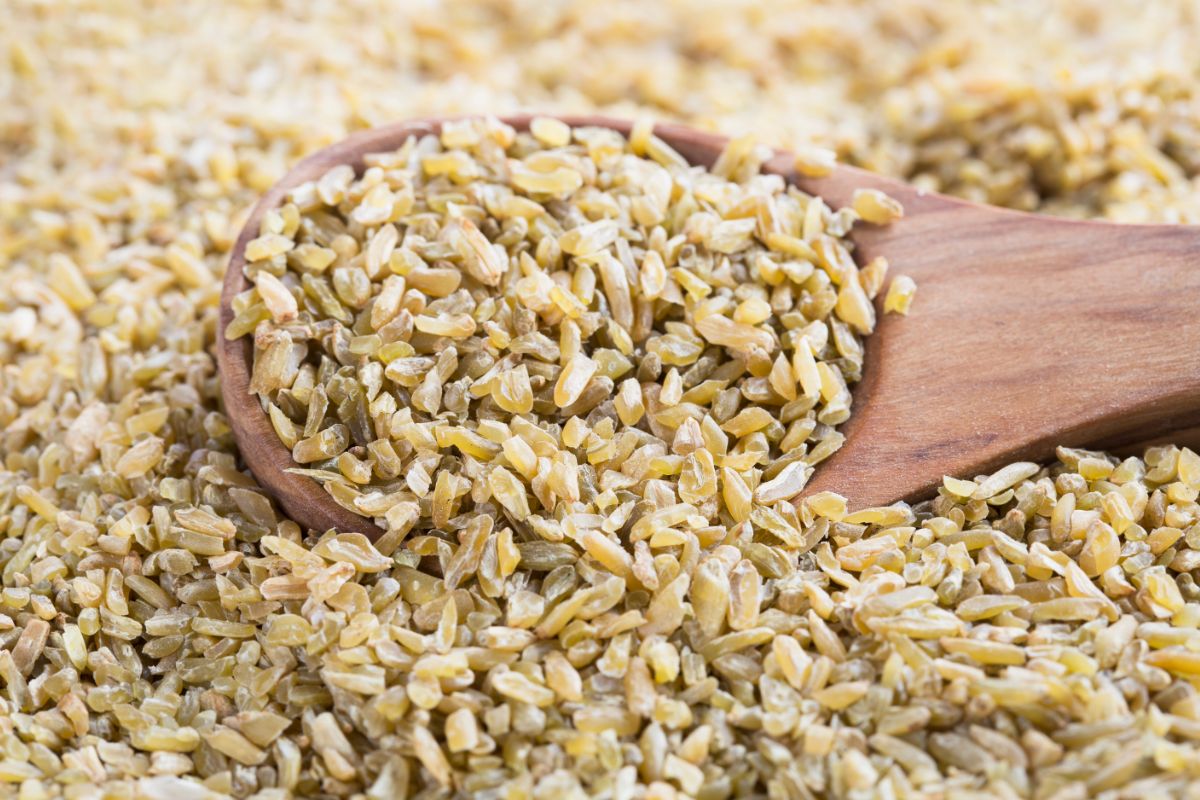
Top Facts About Freekeh: Freekeh, which is also known as farik, is a cereal food that is made from green durum wheat (i.e. not ripe) that has been roasted and rubbed to produce its flavor.
Calories In Freekeh: 564 calories per cup.
Nutrients Present: 96 grams of carbohydrates, 20 grams of protein, and 18 grams of fiber per cup, vitamin B6, minerals magnesium, manganese, phosphorus, calcium, zinc, and iron.
Benefits: As freekeh is low in fat and high in both protein and fiber, it can help you feel fuller for longer, which is helpful with weight loss.
Gluten Content: Since freekeh is derived from wheat grains, this means that it DOES contain gluten, and is not suitable for anyone with celiac disease.
How To Eat Freekeh:
- Use freekeh as a side dish
- Toss some freekeh into salad dishes
- Add freekeh to your soups
Potential Substitutes:
- Quinoa
- Farro
- Barley
- Couscous
6. Millet
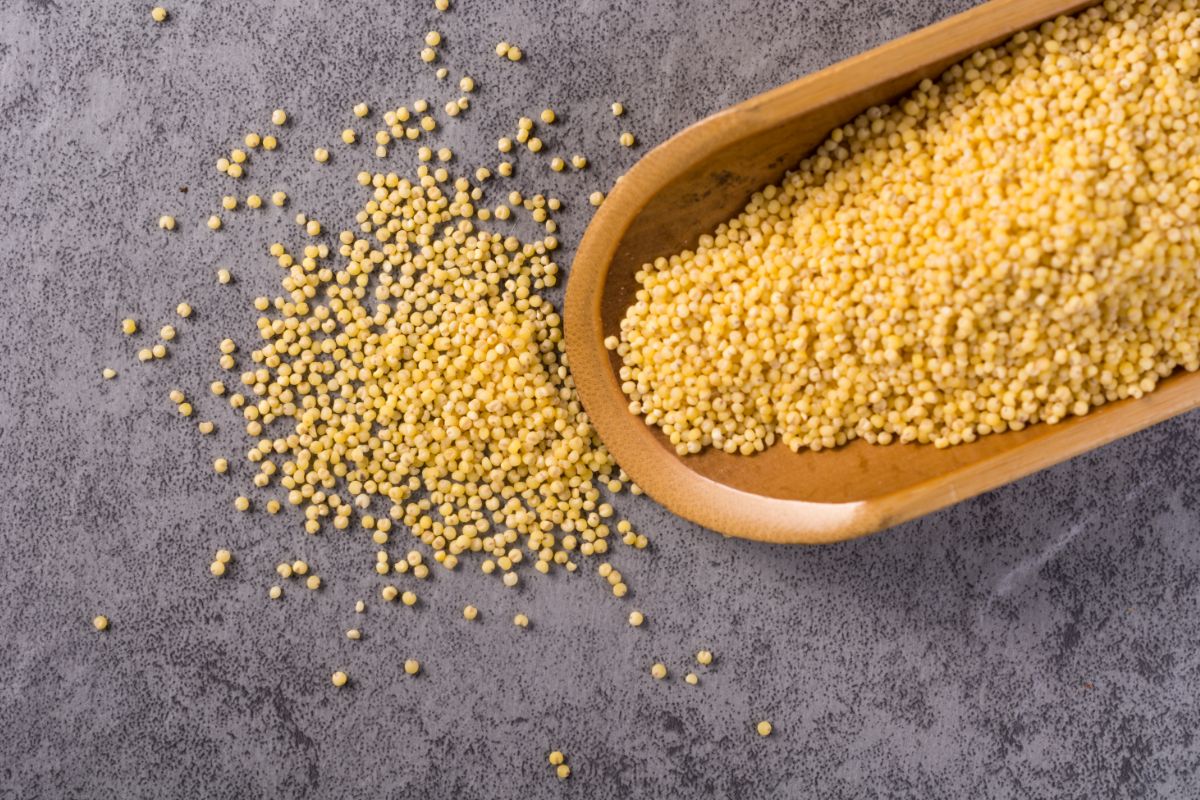
Top Facts About Millet: The term millet can be used to refer to a whopping 6,000 species of small-seeded grasses. It is one of the oldest human foods. In eastern Africa, millet is used to make beer.
Calories In Millet: 756 calories per cup.
Nutrients Present: 144 grams of carbohydrates, 24 grams of protein, 16 grams of fiber, vitamins B6, C, E, and K, folate, pantothenic acid, niacin, and riboflavin, and minerals calcium, copper, iron, magnesium, phosphorus, potassium, and selenium.
Benefits: Millet is believed to help people achieve and maintain a healthy weight, manage gut inflammation, prevent the onset of diabetes, and protect heart health.
Gluten Content: Millet is naturally gluten-free, and is perfect l
- Alternative to rice with curry
- Rice side dishes
- Use millet in salads
- Make it into an oatmeal
Potential Substitutes:
- Bulgur
- Quinoa
- Amaranth
7. Oats

Top Facts About Oats: Common oats are a species of cereal grain grown for its seed, also known as oats. And although they are suitable for humans, they are one of the most common foods for livestock.
Calories In Oats: 303 calories per cup.
Nutrients Present: 51 grams of carbohydrates, 13 grams of protein, and 8 grams of fiber per cup, vitamin E, folates, and minerals zinc, iron, selenium, copper, manganese, carotenoids, betaine, and choline.
Benefits: Oats can reduce blood glucose levels, relieve skin irritation, promote healthy bacteria in your gut and ease constipation, and lower your risk of colon cancer.
Gluten Content: Pure, uncontaminated oats are gluten-free.
How To Eat Oats:
- Use oats for oatmeal or oatmeal
- You can eat raw oats
Potential Substitutes:
- Brown rice
- Quinoa
- Millet
- Chia seeds
- Buckwheat
8. Brown Rice

Top Facts About Brown Rice: Brown rice is basically whole grain rice where the inedible outer hull has been removed. The bran and germ layer remain on, however, giving the rice grains their brown color.
Calories In Brown Rice: 216 calories per cup.
Nutrients Present: 45 grams of carbohydrates, 5 grams of protein, and 3.5 grams of fiber per cup, and vitamins and minerals folate, riboflavin (B2), potassium, calcium, and manganese.
Benefits: Brown rice protects brain and bone health, helps manage blood glucose levels, controls cholesterol levels, and aids digestion.
Gluten Content: In its natural state, brown rice is free of gluten.
How To Eat Brown Rice:
- Use as a side dish for curries
- Use it in a stir-fry
- Use tossed in a salad
- Use in stuffed bell peppers
Potential Substitutes:
- White rice
- Quinoa
- Farro
- Barley
- Black rice
9. Rye
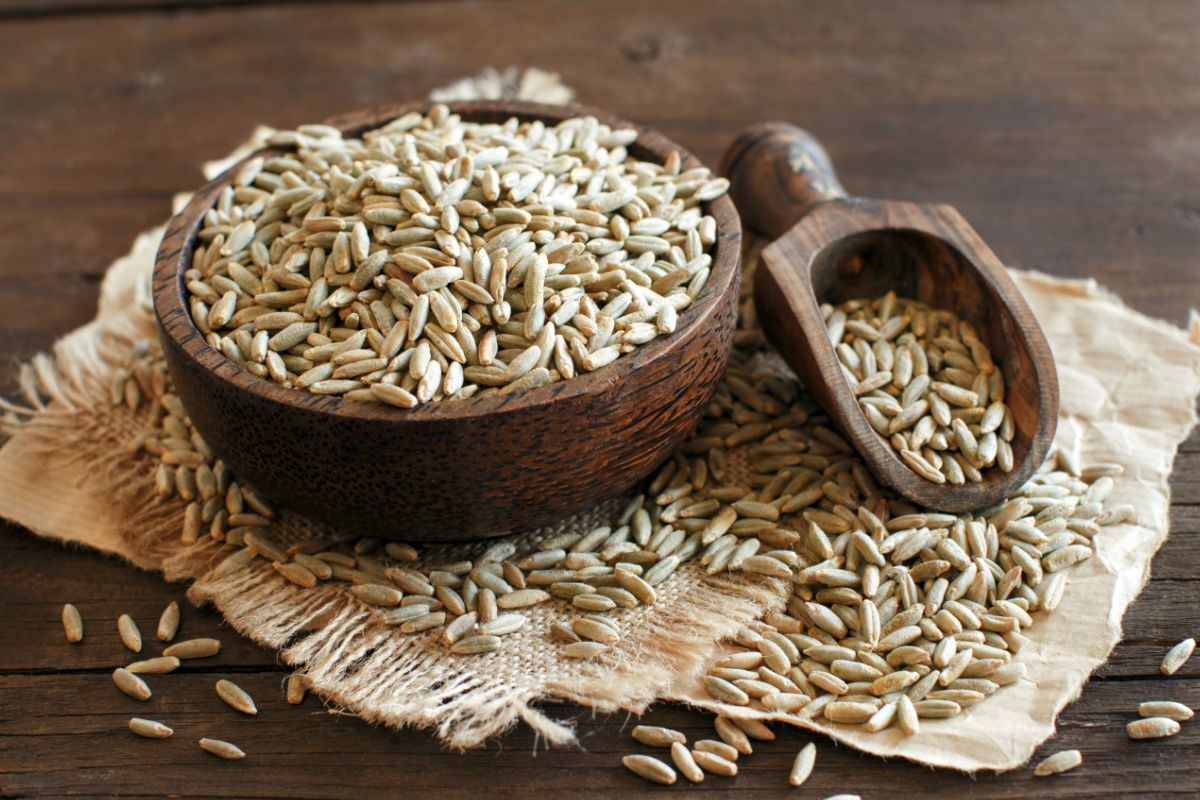
Top Facts About Rye: Rye is grown as a grain and crop and is a wheat that’s closely related to barley.
Calories In Rye: 571 calories per cup.
Nutrients Present: 12 grams of carbohydrates, 2.1 grams of protein, and 24.67 grams per cup, and vitamins and minerals iron, folate, magnesium, niacin, phosphorus, potassium, riboflavin, and thiamin.
Benefits: Rye lowers the insulin response, improving blood glucose levels, and it can reduce inflammation in the gut.
Gluten Content: Rye is relatively low in gluten, at 3.08 grams per 100 grams.
How To Eat Rye:
- Can be ground into flour
- Use to make beer, vodka, or whiskey (see also ‘5 Whiskey Grains‘)
Potential Substitutes:
- Rye flour can be substituted for other flour
10. Spelt
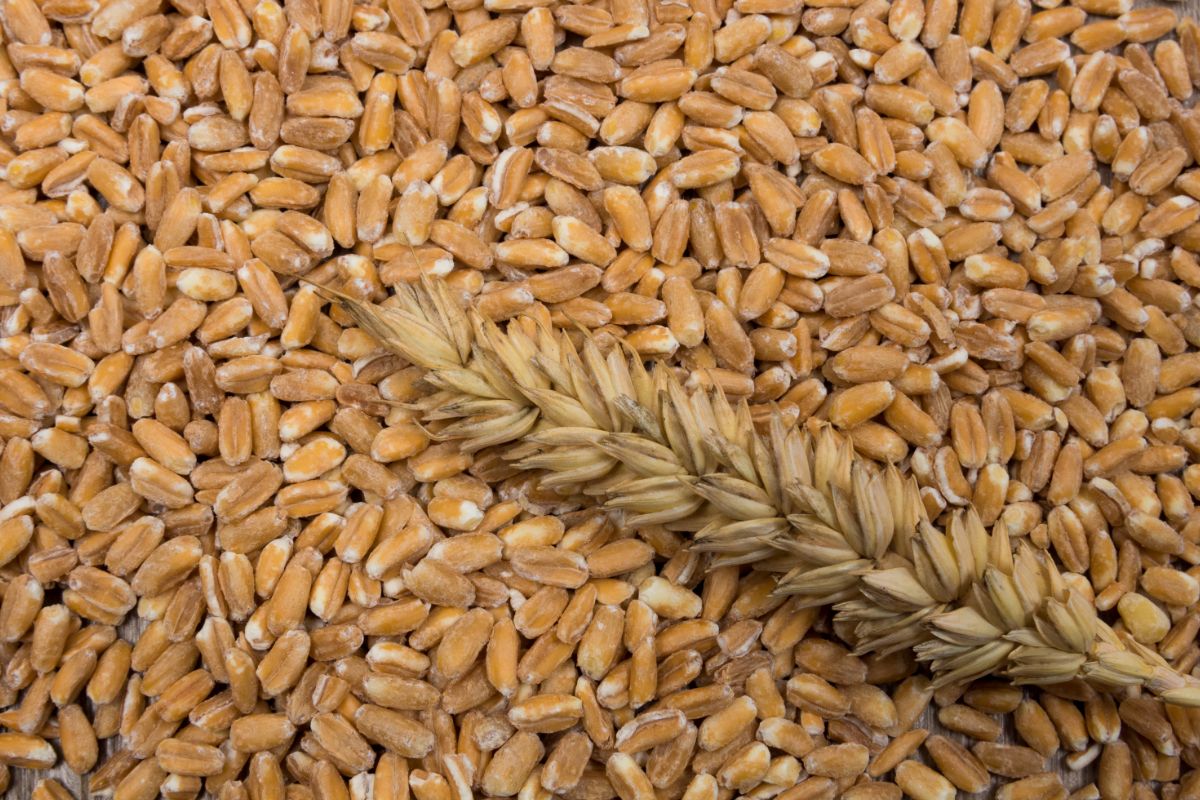
Top Facts About Spelt: Spelt is also known as hulled wheat or dinkel wheat. It has been cultivated since 5,000 BC, and was a staple food in much of Europe from the Bronze Age, right the way through to medieval times.
Calories In Spelt: 588 calories per cup
Nutrients Present: 122 grams of carbohydrates, 25 grams of protein, and 19 grams of dietary fiber per cup, vitamins B6, minerals magnesium, and iron.
Benefits: Spelt has a low glycemic index and provides slow-release energy, which is good for blood glucose levels. It prevents boating. It lowers cholesterol in the blood.
Gluten Content: Spelt does contain gluten, so should be avoided by anyone with celiac disease.
How To Eat Spelt:
- Use in soups
- Use in salads
- Use in risottos
- Use in pilafs
Potential Substitutes:
- Pearled barley
Wrap Up
You generally find that all of these grains lend themselves very well to classic Mediterranean dishes as well as more creative dishes that are inspired by the Mediterranean diet.
And many people like to experiment with using alternative grains in dishes designed to have popular Mediterranean flavors.
You will find a shortlist of our favorite 15 Mediterranean grain recipes on this link. Please enjoy!

